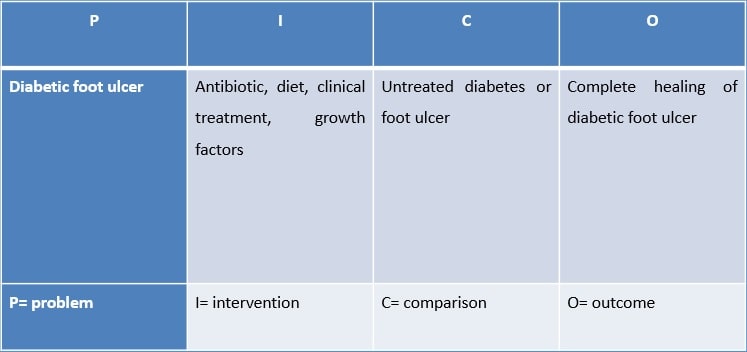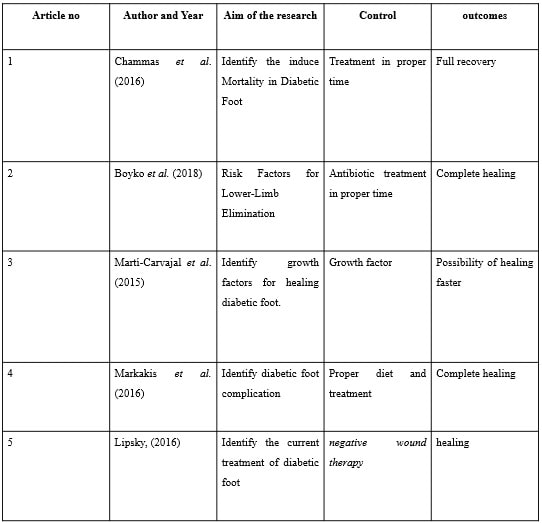Angioplasty operation Sample Assignment
Angioplasty operation
Introduction
Diabetic foot ulcer is developed from uncontrolled diabetes. In diabetic foot ulcer patient suffering from severe pain, foot deformities, trauma and irritation. The research is discussed about the diabetic foot ulcer. Now a days due to adverse food habit, excessive mental pressure, depression, life stress diabetes is very common in the people. Diabetic foot ulcer is developed due to breaking down of skin tissues and exposing the layers beneath the skin (Lipsky, 2016). The research has been done in order to identify what are the causes of diabetic foot ulcer and what are the preventive methods and medication of this disease.
What are the causes of diabetic foot ulcer? What are the preventive methods and medication of this disease?
Methods
The research was developed by PICO format and literature review. In order to carry forward the research at first the researcher has searched journal articles relevant to the topic. After that the research has been done through the critical analysis of the qualitative and quantitative data found in the journal article.
Table 1

Results
Five journal article were critically evaluated for the supporting information. The article were both qualitative and quantitative analysis method. 2 quantitative and 3 qualitative research article has been used in this research.

Conclusion
The research has shown that untreated diabetes can be a cause of diabetic foot ulcer. There are several treatment such as negative wound therapy, hyperbaric oxygen treatment that are beneficial for the patient. On the other hand, clinically uninfected, insensible, warm foot of diabetic patient must be considered as Charcot foot. Previous research has identified 11 growth factors for diabetic foot ulcer. The growth factors are very efficient for the patient in order to heal the wound. On the other hand, untreated diabetic foot ulcer can lead to amputation.
Discussion
Diabetic foot ulcer is becoming a chief health care problem in recent era. According to the journal review it can be said that remedy of the diabetic foot ulcer mostly depends on daily basis clinical care and proper diet (Boyko et al., 2018). Form the study it is seen that negative wound therapy is beneficial for the patients of post-surgical diabetic foot wounds. Moreover, hyperbaric oxygen treatment is also effective for the patient. There are various type of wound dressing that is beneficial for the patient. However there are no specific type of dressing method has been identified that might be superior. Now a days, clinically uninfected, insensible, warm foot of diabetic patient must be considered as Charcot foot (Markakis et al., 2016). According to the study untreated diabetic foot ulcer can lead to amputation. Blood platelets, macrophages or endothelium might be effective treatment for this disease but there were also risk. The previous research has identified 11 growth factors for diabetic foot ulcer such as autologous growth factor, transforming growth factor 2, fibroblast growth factor etc. Moreover, the growth factors which develop naturally in the body were proved to be effective in complete healing of this wound (MartCarvajal et al., 2015).
On the other hand. Diabetic foot infections can be overwhelming, frequently eventuating in hospitalization and rarely a lower extremity limb deduction. Foot ulceration is related to peripheral neuropathy frequently associated with peripheral arterial disease. In maximum cases the wound become infected and in order to heal the wound antibiotic is essential. Untreated wound often needs surgical procedure (Lipsky, 2016). Another research has been done in order to identify the cause of death and mortality rate of the patient suffering from diabetic foot ulcer. There were many patients died during the research. However, the real cause could not be identified of the patient. The study has said that ischemic heart disease could be a major reason for the patient death (Chammas et al., 2016).
References
Chammas, N.K., Hill, R.L.R. and Edmonds, M.E., 2016. Increased mortality in diabetic foot ulcer patients: the significance of ulcer type. Journal of diabetes research, 2016.
Boyko, E.J., Seelig, A.D. and Ahroni, J.H., 2018. Limb-and person-level risk factors for lower-limb amputation in the prospective Seattle Diabetic Foot Assignment. Diabetes Care, 41(4), pp.891-898.
MartCarvajal, A.J., Gluud, C., Nicola, S., SimancasRacines, D., Reveiz, L., Oliva, P. and CedeoTaborda, J., 2015. Growth factors for treating diabetic foot ulcers. Cochrane Database of Systematic Reviews, (10).
Markakis, K., Bowling, F.L. and Boulton, A.J.M., 2016. The diabetic foot in 2015: an overview. Diabetes/metabolism research and reviews, 32, pp.169-178.
Lipsky, B.A., 2016. Diabetic foot infections: Current treatment and delaying the postantibiotic era. Diabetes/metabolism research and reviews, 32, pp.246-253.


